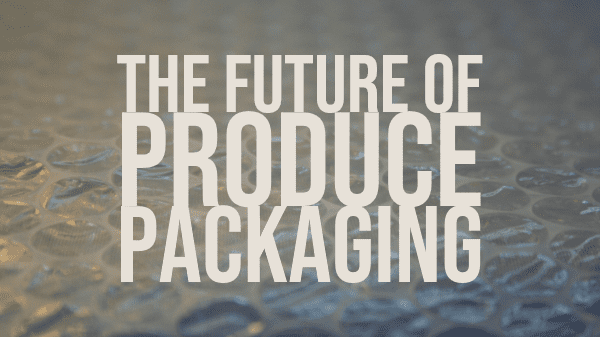
The conversation regarding sustainable packaging is central in today’s perishables industry, as consumer demand for sustainability in food packaging continues to grow.
Packaging companies are pursuing new and innovative methods to package produce, some of which are having surprising and very positive impacts on the logistics of moving perishables.
Which methods show the most promise, and can true sustainability be achieved?
The Demand
Most packaging companies will say the conversation about sustainability comes up with every fresh produce customer. Selling produce is no longer solely about offering a quality product, but also about getting it to the consumer via sustainable packaging.
Research shows two-thirds of global consumers are willing to pay more for sustainable goods. In addition, in 2018, sales increased five times more for food sold in sustainable packaging verses product sold in nonrecyclable packaging. The reality is, consumers want their produce to be as environmentally friendly as possible.
The Future
The future of packaging lies in finding innovative solutions to the growing demand for true sustainability. The packaging industry is rising to the challenge as collaboration between packaging companies, recyclers, and retailers is escalating to meet the increasing demand for sustainability from customers.
Everyone wants to solve the problem. The key question is no longer, “is it recycled?” but “how is it recycled?”
The Challenge
The challenge in packaging is that most of the materials traditionally used to achieve sustainability either shorten the life of perishable products—thereby creating more food waste—or the process of moving them from warehouse to market emits more fuel consumption due to the excess weight associated with various types of recyclable packages.
In addition, many recyclable packages end up in landfills due to less demand for post-consumer recycling. Currently, 1.45 million tons of recyclable wax corrugated packaging, a staple for fresh produce, ends up in landfills each year.
This is multi-part feature on sustainable produce packaging adapted from the October 2019 issue of Produce Blueprints.
The conversation regarding sustainable packaging is central in today’s perishables industry, as consumer demand for sustainability in food packaging continues to grow.
Packaging companies are pursuing new and innovative methods to package produce, some of which are having surprising and very positive impacts on the logistics of moving perishables.
Which methods show the most promise, and can true sustainability be achieved?
The Demand
Most packaging companies will say the conversation about sustainability comes up with every fresh produce customer. Selling produce is no longer solely about offering a quality product, but also about getting it to the consumer via sustainable packaging.
Research shows two-thirds of global consumers are willing to pay more for sustainable goods. In addition, in 2018, sales increased five times more for food sold in sustainable packaging verses product sold in nonrecyclable packaging. The reality is, consumers want their produce to be as environmentally friendly as possible.
The Future
The future of packaging lies in finding innovative solutions to the growing demand for true sustainability. The packaging industry is rising to the challenge as collaboration between packaging companies, recyclers, and retailers is escalating to meet the increasing demand for sustainability from customers.
Everyone wants to solve the problem. The key question is no longer, “is it recycled?” but “how is it recycled?”
The Challenge
The challenge in packaging is that most of the materials traditionally used to achieve sustainability either shorten the life of perishable products—thereby creating more food waste—or the process of moving them from warehouse to market emits more fuel consumption due to the excess weight associated with various types of recyclable packages.
In addition, many recyclable packages end up in landfills due to less demand for post-consumer recycling. Currently, 1.45 million tons of recyclable wax corrugated packaging, a staple for fresh produce, ends up in landfills each year.
This is multi-part feature on sustainable produce packaging adapted from the October 2019 issue of Produce Blueprints.
Hannah Stolze is associate professor of marketing and supply chain management at Wheaton College in Wheaton, IL, and has a PhD in business administration with a concentration in logistic and marketing.



